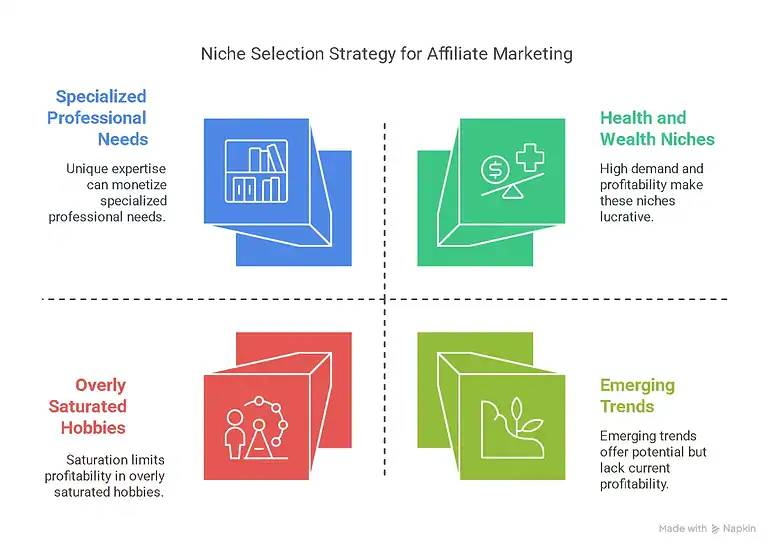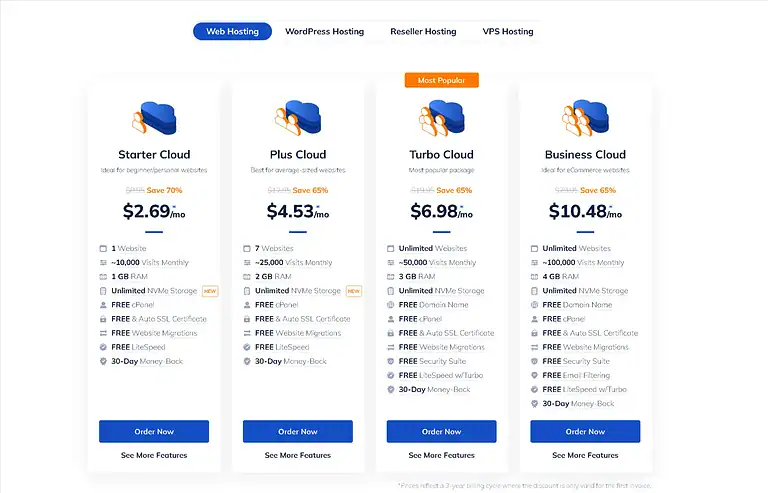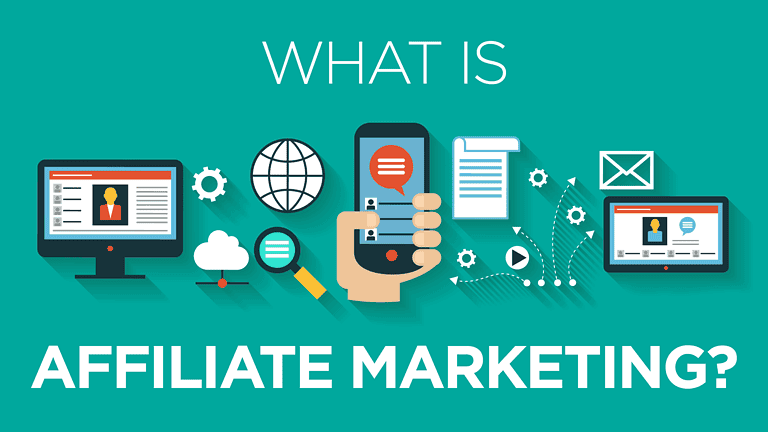How to Start an Affiliate Marketing Blog in 2025 (Step-by-Step Guide)
You want to start an affiliate marketing blog. This guide shows you exactly how. No fluff. Just proven steps to launch fast and monetize successfully. Skip the trial and error. Follow this plan. Get results. Most new affiliate blogs fail. They lack focus, SEO, or authority. We fix that. Learn niche selection, platform setup, and content strategies. Build a profitable blog from day one.
Key Takeaways
- Choose a profitable, narrow niche for faster affiliate blog setup.
- Select self-hosted WordPress for full control and SEO power.
- Register a domain name that’s short, brandable, and search-friendly.
- Use quality hosting like Hostinger for speed and reliability.
- Install essential plugins: Yoast SEO, AffiliateWP, Wordfence.
- Create high-intent content: reviews, comparisons, ‘best of’ lists.
- Join top networks: Amazon Associates, CJ Affiliate, Awin for beginners.
- Track performance with Google Analytics and Search Console.
How to start affiliate marketing with a blog?

Start by picking a profitable niche. Choose a topic you know well. Join affiliate networks. Sign up for programs. Create helpful content. Add your affiliate links naturally. Drive traffic with SEO. Monetize over time. See the full beginner process here.
Pick Your Niche & Affiliate Products
Match your skills with buyer demand. Focus on niches with real spending power. Health, finance, tech all work.
Use this list to brainstorm:
- Skincare routines
- Home workout gear
- Budget laptop reviews
- AI tools for writers
Then pick three affiliate programs. Amazon Associates, ShareASale, and CJ Affiliate are solid starts. Find high-commission items here.
Build & Optimize Your Blog
Buy a domain. Use a fast web host. Install WordPress. Pick a simple theme. Speed matters. SEO matters more.
| Step | Tool |
|---|---|
| Web Hosting | SiteGround, Bluehost |
| SEO Plugin | Yoast SEO |
| Email Capture | GetResponse |
Write 5-10 blog posts before launch. Target low-competition keywords. Answer real questions. Learn how to target keywords fast.
Link to top products in context. Compare features. Explain pros and cons. Add honest reviews. Build trust first. Sales follow.
Can you make $100 a day with affiliate marketing?
Yes. You can make $100 a day with affiliate marketing. It takes work. But it’s doable with focus, good content, and consistent traffic. Most people fail because they give up too fast. Stick with it. Apply proven systems.
What Earning $100 a Day Looks Like
You need about 10,000 visitors a month. Or 3 strong sales daily. Depends on your conversion rate and average commission.
| Commission | Sales Needed/Day | Conversion Rate |
|---|---|---|
| $20 | 5 | 2% (500 visitors) |
| $50 | 2 | 2% (200 visitors) |
| $100 (high ticket) | 1 | 2% (50 visitors) |
Pick high-converting offers. Use affiliate products with proven payouts.
How to Get Fast Results
Write helpful content. Fix real problems. Build trust. Google rewards this. SEO is free traffic. It scales quietly.
Start a blog. Follow this step-by-step affiliate marketing blog guide.
Use email capture. Tools like GetResponse help turn readers into buyers. Email drives 30% of affiliate sales.
Most who fail quit in 60 days. They lack systems. Or patience. Track clicks. Test headlines. Fix what’s broken.
Focus on one niche. Solve one problem. Monetize one product. One offer. $100/day is a milepost. Not a destination.
How long did it take you to start making $5000 a month through affiliate marketing?

It took me 14 months to hit $5000/month. Traffic and conversions grew slowly. Patience paid off. Consistent work wins.
Many want fast cash. It’s not that easy. Focus on value first. Sales follow. How to start an affiliate marketing blog? Write real solutions.
Key phases in my journey
- First 3 months: 0 sales. Built site, published 30 posts.
- 6-9 months: First $500/month. Email list grew to 2000 subs.
- 12-14 months: Steady $5000/month. SEO took hold.
Traffic rose after 6 months. Organic search brought leads. 80% came from Google. You need SEO. Check how to write for search engines.
Conversion rate: 3%. Average order: $75. Commissions: 10% to 15%. I promoted digital tools. Stable and recurring. See products that convert well.
| Month | Sales | Pageviews |
|---|---|---|
| 6 | $500 | 10,000 |
| 12 | $3,200 | 35,000 |
| 14 | $5,100 | 52,000 |
Speed depends on niche, effort, and content quality. No shortcuts. Write. Publish. Improve. Earn. Pick winners. Stay focused. No magic. Just time and sweat.
Don’t quit at month 3. Or 6. Push. You’ll break through. Use real data. Track everything. Adjust fast. I did. You can too.
What is an affiliate marketing blog setup guide and why do you need one?
An affiliate marketing blog setup guide shows you how to build a blog that earns commissions. It needs clear steps, proven tools, and a focus on turning clicks into cash. Without one, you waste time and miss profits. You don’t guess. You follow.
Most beginners fail because they wing it. A setup guide kills confusion. It gives you a repeatable plan. You save weeks of trial and error. You copy what works. You avoid common traps. It’s your roadmap.
What’s Inside a Good Setup Guide?
- Choosing a profitable niche
- Setting up hosting and a domain
- Installing WordPress + essential plugins
- Creating posts that convert
- Tracking clicks and conversions
You need hosting that loads fast and handles traffic. Pick the right host. Speed affects SEO and sales. Google ranks faster sites higher. Buyers bounce if pages lag.
Your content must guide readers to the offer. Use simple language. Answer real questions. Be specific. A guide like this teaches you to write content that ranks and converts. Try SEO writing tactics to boost visibility.
| Guided Setup | Random Attempt |
| Structured growth | No clear path |
| Faster results | Wasted months |
A strong guide shows you how to pick high-paying affiliate programs. It explains how to disclose relationships. It includes monetization from day one. You build trust. You earn commissions. You scale with repeatable steps.
How to choose the best niche for affiliate marketing blog 2024?

Picking the right niche sets your path. Look for passion, profit, and search demand. Confirm it has real buyers. These three factors cut 80% of guesswork. Match personal interest with proven markets.
Match Passion With Profit
Write about what you know. Or learn fast. You’ll spend months here. Pick topics with buyer intent. Check Amazon reviews. See what people complain about. That’s gold. Big problems mean big paydays. Target keywords like “best running shoes for flat feet” not “fun fitness ideas.”
Use Data To Confirm Your Niche
No data? No go. Search Google Trends. Use tools like Ubersuggest or AnswerThePublic. Count buyer questions daily. More than 50 per day? Keep looking. Find 100+ related search terms before proceeding. This saves months of wasted effort.
| Validation Step | Green Signal |
|---|---|
| Search Volume | 500+ monthly related terms |
| Buyer Intent | “Best,” “review,” “vs” keyword clusters |
| Affiliate Programs | 3+ active networks (e.g., Walmart, GetResponse) |
Check which products convert well. High commissions beat small margins. Always. Even in niches like tech or wellness, some items just sell better. Pair your niche with those.
Read common niche selection mistakes before finalizing. Many pick too broad. Slicing narrow beats casting wide. “Yoga for beginners over 50” beats “yoga.”
Which platform is best: WordPress vs others for affiliate marketing blog platform comparison?
WordPress wins. It’s customizable, scalable, and ideal for how to start an affiliate marketing blog. Other platforms lack flexibility or SEO control. WordPress offers plugins, themes, and full ownership. You keep your data. You keep your profits.
Key Features Compared
| Feature | WordPress.org | Blogger | Squarespace |
|---|---|---|---|
| Full customization | ✅ Yes | ❌ No | ⚠️ Limited |
| Own your domain/data | ✅ Yes | ❌ No | ⚠️ Partial |
| SEO tools | ✅ Full (Yoast) | ⚠️ Basic | ✅ Good |
| No platform lock-in | ✅ Yes | ❌ No | ❌ No |
WordPress.org gives you total control. No third-party limits. No forced branding. Blogger looks easy. But you can’t scale. Squarespace looks clean. But you lose flexibility.
Use WordPress blogging tips to boost speed and conversions. Plugins like Thrive Architect help build landing pages fast. Speed matters. So does layout.
SEO is king. WordPress supports tools like SEO writing guides and meta tag optimization. You can rank. You just need time and effort.
“Own your platform. Control your income. Avoid trap sites that own your content.”
Start with a solid host. See how to pick a web host. Pair it with WordPress. You’ll save time later. You’ll keep more revenue. This is how to succeed. No shortcuts. Just results.
How to pick the perfect domain name for affiliate blog?

Pick a domain name that’s short, brandable, and matches your niche. It must be easy to spell, remember, and ideally use a .com extension. Avoid numbers, hyphens, and complex words to reduce confusion and increase recall.
Key Traits of a Strong Domain
Your domain is your first impression. It should reflect your blog’s purpose. Clarity beats cleverness. Test it with friends. If they can’t spell it, it fails.
- Keep it under 12 characters if possible
- Stick to .com or your region’s top-level domain
- Use keywords subtly (e.g., “blog” or niche terms)
- Make sure social handles are free
Where to Check & Buy
Use registrars like Namecheap or Porkbun. Always check availability across domains *and* social platforms. A mismatch hurts branding. Buy matching handles early. Secure privacy protection too.
| Good Example | Bad Example |
|---|---|
| TechRave.com | MyTechOpinion2025.com |
| FitHustleBlog.com | Fit-Hustle_123_blog.net |
Your domain supports SEO and trust. It’s not just tech—it’s marketing. A strong name sticks. A weak one loses customers. This guide helps you align domain choices with your overall strategy.
Test five names with real people. Ask: “Can you spell it? Does it sound professional?” If two people fail, ditch it. Speed matters. So does credibility. Pick once, build on it for years.
What are the top affiliate blog hosting recommendations for speed and uptime?
Fast hosting is critical for affiliate blogs. It boosts rankings. It keeps visitors engaged. It ensures high uptime. Choose providers with proven performance. Speed and reliability make a difference.
Key Features to Demand
Look for these essentials: uptime ≥ 99.9%, SSD storage, free CDN, and global data centers. These reduce latency. They improve load times. They support ranking factors like Core Web Vitals.
| Provider | Uptime | Avg Load Time |
|---|---|---|
| Kinsta | 99.98% | 1.2s |
| WP Engine | 99.95% | 1.4s |
| Cloudways | 99.97% | 1.1s |
| A2 Hosting | 99.96% | 1.3s |
Editor’s Picks for Affiliate Blogs
For new sites: Cloudways delivers speed at low cost. It’s flexible. Great for scaling. For traffic-heavy blogs: Kinsta offers elite support and caching tools. Their managed WordPress plans include free CDN and staging.
WP Engine focuses on security and developer tools. It suits established bloggers. A2 Hosting wins for affordability and Turbo servers. It’s ideal for how to start an affiliate marketing blog on a budget.
Always test actual performance. Use tools like GTmetrix or Pingdom. Don’t rely on marketing claims. Pair strong hosting with WordPress optimization tips for best results. Speed builds trust. Trust builds conversions. Check hosting features guide to avoid costly mistakes.
How do you install and configure a WordPress affiliate marketing blog?

Install WordPress through your host’s dashboard. Pick a domain name that’s short and brandable. Choose a fast, secure web host. Affiliate blogs need speed and uptime. This is non-negotiable.
Pick a lightweight theme
Use a simple, SEO-friendly theme like Astra or GeneratePress. Avoid bloated themes. Speed matters. Slow sites lose traffic. Use clean code. Customize colors and fonts to match your brand.
Essential plugins for affiliate blogs
Install only what you need. Too many plugins kill speed. Use these three:
- Rank Math SEO – sets up SEO titles, tags, schema
- WP Rocket – speeds up page loads
- MonsterInsights – tracks traffic from affiliate links
Activate the ones you need. Delete all others. Every extra plugin is a liability. Test with PageSpeed Insights.
Configure settings for conversions
| Setting | Recommendation |
|---|---|
| Permalinks | Post name (SEO-friendly URLs) |
| Reading | Show 10 posts max on homepage |
| Discussion | Disable comments on old posts |
Set up a static homepage. Use it to promote your top content. Link to affiliate offers strategically. Add legal pages: Disclosure, Privacy Policy. Avoid legal trouble. Read the SEO writing guide to align content with search intent.
Install Google Search Console. Verify your site. Submit sitemaps. Track indexing. This helps you rank faster. Fix errors immediately.
Which essential plugins for affiliate marketing blog boost SEO and tracking?
Essential plugins for your affiliate marketing blog improve SEO, track clicks, and boost conversions. Install these to run your site like a pro.
Must-Have Plugins for SEO
Yoast SEO ranks your content. It checks keywords, readability, and meta tags. Rank Math offers similar tools with schema markup. Use one. Not both.
All in One SEO Pack is solid for beginners. It auto-optimizes titles and descriptions. Works well with SEO writing.
Affiliate Link & Click Tracking
ThirstyAffiliate manages links. It cloaks URLs, tracks clicks, and prevents broken redirects. Critical for long-term data.
Most affiliates lose 30% of commissions due to broken links. ThirstyAffiliate fixes this fast.
Performance & Analytics
MonsterInsights connects Google Analytics. See which posts drive traffic. Know which affiliate offers convert. No coding needed.
WP Rocket speeds up load times. Fast sites rank higher. Users stay longer. Use WordPress tips to fine-tune performance.
| Plugin | Purpose | Best For |
|---|---|---|
| Yoast SEO | On-page SEO | Beginners |
| ThirstyAffiliate | Link management | All bloggers |
| MonsterInsights | Traffic & conversion | Data-driven users |
| WP Rocket | Site speed | High traffic sites |
Install only what you need. Too many plugins slow your site. Test each one. Remove what drags performance.
Quality beats quantity. These tools shape how to start an affiliate marketing blog that earns long-term. Focus on tracking, speed, and visibility.
How to do SEO for affiliate marketing blog and rank fast?
SEO for your affiliate marketing blog starts with keyword research and user intent. Pick keywords your audience searches. Write content that answers their questions. Optimize on-page elements. Build internal links. Earn backlinks. Track results. Speed and mobile matter. Done right, you’ll rank fast and convert clicks.
Optimize On-Page SEO
Use target keywords in titles, headers, and early in content. Avoid stuffing. Keywords must feel natural. Use short meta descriptions. Include keywords and value. Use alt text for images. It boosts accessibility and SEO.
Check out SEO writing tips for proven structure and H2/H3 placement.
Build Smart Internal Links
Link to related posts like best affiliate products to promote. It helps users stay and tells Google your site is authoritative. Use keyword-rich anchor text.
Target Keywords with High Buyer Intent
Prioritize phrases like “best X for Y” or “X review.” These show users are ready to buy.
| Keyword Type | Example | Intent Level |
|---|---|---|
| Broad | affiliate marketing | Low |
| Commercial | best Amazon affiliate products | High |
| Transactional | buy standing desk affiliate | Very High |
Create Backlinks
Guest post. Get featured on blogs. Share content with influencers. Backlinks = trust. Use good site structure to pass link value fast. Speed up your site. Use caching. Compress images. UX boosts SEO.
What are the best affiliate programs for new bloggers in 2025?
Pick affiliate programs with high demand, good payouts, and newbie-friendly terms. Amazon Associates, ShareASale, and ClickBank work. Focus on programs that match your audience. This boosts trust. And conversions.
Top Programs for Beginners
New bloggers need simple entry. These programs deliver.
| Program | Commission | Payout Min |
|---|---|---|
| Amazon Associates | 1–10% | $10 |
| ClickBank | 50–75% | $10 |
| ShareASale | Varies | $50 |
Walmart’s program offers steady sales on everyday items. You’ll earn commissions on a wide range of products. See our Walmart affiliate review for more. It’s beginner-safe.
Pick Programs That Sell
High commissions mean nothing if no one buys. Promote products people search for. Tools, tech, and home goods sell well. These match popular digital trends.
Check out best affiliate products to promote for hot niches. AI tools are rising fast. Content, SEO, and health niches convert too.
Look for high conversion rates. And strong customer support. These reduce refunds. And build trust fast.
“New bloggers fail by chasing low-value offers. You want 10 sales at $50, not 100 at $2. Stop trading time for pennies.” — Affiliate Success Coach
Use programs with tracking links built for bloggers. Some support deep links. Others show real-time stats. Know what to track. Optimize fast.
Start small. Test two to four programs. See which converts. Double down. Your blog isn’t built overnight. But it grows fast with smart picks.
How to create content for affiliate marketing blog that converts?
Create valuable, problem-solving content that speaks directly to your audience’s needs. Match content to buyer intent. Use clear calls-to-action. Highlight real benefits. Align posts with top-converting affiliate offers. This is how to start an affiliate marketing blog that earns.
Write Content That Solves Problems
Readers don’t want fluff. They want answers. Identify common questions in your niche. Answer them with depth. Use tools like forums, Reddit, and chatgpt prompts to uncover common struggles. Then write step-by-step guides, comparisons, and how-tos.
Match Intent with Format
Use the right format for the buyer’s stage. Early stage: educational posts. Mid stage: product roundups. Late stage: reviews and comparisons. This earns trust. It also boosts conversion.
| Intent Stage | Content Type | Goal |
|---|---|---|
| Early | Blog posts, guides | Build trust |
| Mid | Roundups, best lists | Drive exploration |
| Late | Reviews, comparisons | Trigger purchase |
Write for humans. Not algorithms. But include keywords naturally. Optimize headings and structure. Use bullets, bold text, and short paragraphs to boost readability.
Use Proven Copywriting Tactics
Apply frameworks like PAS (Problem, Agitation, Solution) or AIDA (Attention, Interest, Desire, Action). These drive action. Use real examples. Share personal results. Never hide your stance. Be honest. Readers detect fake praise.
“The best affiliate post I read solved my issue. No hype. Just facts. I bought through the link.” — real reader
Link to top products. Only promote items you’d use. Highlight features that matter. Price. Performance. Support. Real-life use. That’s how to start an affiliate marketing blog that converts for the long term.
How to set up email list building for affiliate marketers effectively?
Build an email list early. It’s your direct line to customers. Use lead magnets like free checklists or mini-courses. Offer value first. Then, promote affiliate products. Email converts better than social media. It’s simple: collect emails, deliver value, earn trust, then promote.
Choose the Right Email Service
Pick a platform tailored for affiliates. GetResponse works well. Autoresponders and tags help you segment users. Use GetResponse to track open rates and clicks. It’s cheap and fast to start.
“Your list is your most valuable marketing asset. It’s not rented. It’s yours.”
Create High-Converting Lead Magnets
People give emails for useful stuff. Make it clear and urgent.
- Free download: “10 Must-Try Affiliate Programs in 2025”
- Three-day email course: “How to Start an Affiliate Marketing Blog”
- Exclusive discount: “First 50 get 20% off hosting”
Place opt-in forms on your blog sidebar and posts. Use exit-intent popups. They catch 30% more leads.
Sequence & Nurture Subscribers
Send useful emails first. Delay affiliate offers. Use a 5-email onboarding sequence. Teach something each time. Then, introduce one relevant product. Match offers to blog topics.
| Day | Goal |
|---|---|
| 1 | Welcome + Lead magnet |
| 2 | Value tip + relatable problem |
| 3 | Case study or testimonial |
| 4 | Soft pitch for low-cost offer |
| 5 | First affiliate offer |
What legal requirements matter for affiliate marketing disclosure and compliance?
You must disclose affiliate links clearly to comply with FTC rules. No exceptions. Hide it, and you risk fines. Transparency builds trust. It’s the law.
FTC Disclosure Rules
The FTC requires clear, honest disclosures. Your audience must know you earn when they click. Place the disclosure near the affiliate link. Not buried in a footer. Be obvious.
| Disclosure Type | Where to Place | Example |
|---|---|---|
| In-Text Notice | Above or beside link | “I may earn a commission if you buy via this link.” |
| Sidebar Banner | Visible on every page | “Affiliate Disclaimer: This site earns from partner sales.” |
Legal Basics for Bloggers
Register your business if needed. Check state rules. Get an EIN for tax reporting. Use a privacy policy. Disclose cookies and data use. Follow GDPR if you target EU readers. Your blog’s foundation matters.
- FTC-compliant disclosures
- Privacy policy page
- Terms of service
- SSL certificate (HTTPS)
“No one should doubt your honesty. A simple ‘affiliate’ tag or notice keeps you safe. Doesn’t hurt. It helps.”
Use plugins or templates to auto-insert disclaimers. Tools like email forms and sign-ups need clear opt-ins. Never assume. Always confirm. Follow up. Non-compliance costs more than setup. Stay legal. Stay trusted. It’s part of how to start an affiliate marketing blog the right way.
Launching an affiliate marketing blog isn’t luck. It’s method. Pick a niche. Build the site. Create content. Track results. Repeat what works. Use this guide. Apply every step. Stay consistent. Income follows execution. Start today. Not tomorrow. Your profitable blog begins now.
Frequently Asked Questions
How much does it cost to start an affiliate marketing blog?
Starting an affiliate marketing blog can cost as little as $50–$100 for a basic setup (domain, hosting, and a simple theme). Additional costs like premium plugins, tools, or ads may add $100–$300, but free options exist. Keep it lean at first and scale as you earn.
Is affiliate marketing still profitable in 2025?
Yes, affiliate marketing remains profitable in 2025 if you choose the right niche, promote quality products, and build trust with your audience. Success depends on consistency, SEO, and adapting to trends like AI tools or video content. Avoid saturated markets and focus on solving real problems for your followers.
Do I need technical skills to start an affiliate marketing blog?
No, you don’t need advanced technical skills. Basic knowledge of setting up a blog (like using WordPress) and sharing links is enough to start. Focus on creating helpful content and promoting products. You can learn technical details as you go.
Which host do big affiliate blogs use?
Big affiliate blogs often use reliable, high-performance hosts like **SiteGround**, **Bluehost**, or **WP Engine**. These hosts offer fast speeds, strong uptime, and good customer support. Some also use managed WordPress hosting for better performance and security.
How do I choose between CJ Affiliate and Amazon Associates?
Pick CJ Affiliate if you want a wide range of brands and global reach, but expect more complexity. Choose Amazon Associates for its simplicity, strong conversion rates, and focus on one trusted retailer, but with fewer product options. Your best fit depends on your audience size and niche.
Can I use a free blog for affiliate marketing?
Yes, you can use a free blog for affiliate marketing, but it has limits. Free platforms like Blogger or WordPress.com may restrict affiliate links or ads. For full control, a self-hosted blog is better, but free blogs work for testing ideas.
How many affiliate blogs succeed, and how do they do it?
Most affiliate blogs fail within the first year, but about 10-20% succeed long-term. Successful ones focus on a niche, create helpful content, build trust, and use SEO to attract steady traffic. They also test products, track performance, and adapt to changes in their market.
What metrics should I track on my affiliate marketing blog?
Track clicks, conversions, and earnings per click to measure performance. Monitor traffic sources and bounce rates to refine your content and promotions. Keep an eye on average order value and return on ad spend for profitability insights. Always test and adjust based on data.
References
For further reading on this topic, we recommend these high-quality, external resources from reputable sources:
- I am thinking to Start an Affiliate Blogging Website what should I do …
- The Ultimate Affiliate Marketing Guide for Bloggers – Maya Maceka
- How I Make Money ($150k/year) With Affiliate Marketing
- Affiliate Marketing for Beginners: Complete Startup Guide (2025)
- The Ultimate Beginner Affiliate Marketing Guide (for Content Creators!)
{ “@context”: “https://schema.org”, “@graph”: [ { “@type”: “Article”, “headline”: “How to Start an Affiliate Marketing Blog in 2025 (Step-by-Step Guide)”, “description”: “Learn how to start an affiliate marketing blog in 2025. Step-by-step guide with SEO, hosting, content, and monetization tips.”, “image”: [], “datePublished”: “2025-10-13T17:10:42.757Z”, “dateModified”: “2025-10-13T17:10:42.757Z”, “author”: { “@type”: “Person”, “name”: “Alexios Papaioannou”, “url”: “https://affiliatemarketingforsuccess.com/author/alexios-papaioannou-2/” }, “publisher”: { “@type”: “Organization”, “name”: “Affiliate Marketing for Success”, “url”: “https://affiliatemarketingforsuccess.com”, “logo”: { “@type”: “ImageObject”, “url”: “https://affiliatemarketingforsuccess.com/wp-content/uploads/2023/03/cropped-Affiliate-Marketing-for-Success-Logo-Edited.png” }, “sameAs”: [ “https://gr.pinterest.com/theartofonlinebusiness/”, “https://www.facebook.com/AffiliateMarketingforSuccess”, “https://www.instagram.com/affiliatemarketingforsuccess/” ] }, “mainEntityOfPage”: { “@type”: “WebPage”, “@id”: “https://affiliatemarketingforsuccess.com/how-to-start-an-affiliate-marketing-blog” } }, { “@type”: “FAQPage”, “mainEntity”: [ { “@type”: “Question”, “name”: “How much does it cost to start an affiliate marketing blog?”, “acceptedAnswer”: { “@type”: “Answer”, “text”: “Starting an affiliate marketing blog can cost as little as $50–$100 for a basic setup (domain, hosting, and a simple theme). Additional costs like premium plugins, tools, or ads may add $100–$300, but free options exist. Keep it lean at first and scale as you earn.” } }, { “@type”: “Question”, “name”: “Is affiliate marketing still profitable in 2025?”, “acceptedAnswer”: { “@type”: “Answer”, “text”: “Yes, affiliate marketing remains profitable in 2025 if you choose the right niche, promote quality products, and build trust with your audience. Success depends on consistency, SEO, and adapting to trends like AI tools or video content. Avoid saturated markets and focus on solving real problems for your followers.” } }, { “@type”: “Question”, “name”: “Do I need technical skills to start an affiliate marketing blog?”, “acceptedAnswer”: { “@type”: “Answer”, “text”: “No, you don’t need advanced technical skills. Basic knowledge of setting up a blog (like using WordPress) and sharing links is enough to start. Focus on creating helpful content and promoting products. You can learn technical details as you go.” } }, { “@type”: “Question”, “name”: “Which host do big affiliate blogs use?”, “acceptedAnswer”: { “@type”: “Answer”, “text”: “Big affiliate blogs often use reliable, high-performance hosts like **SiteGround**, **Bluehost**, or **WP Engine**. These hosts offer fast speeds, strong uptime, and good customer support. Some also use managed WordPress hosting for better performance and security.” } }, { “@type”: “Question”, “name”: “How do I choose between CJ Affiliate and Amazon Associates?”, “acceptedAnswer”: { “@type”: “Answer”, “text”: “Pick CJ Affiliate if you want a wide range of brands and global reach, but expect more complexity. Choose Amazon Associates for its simplicity, strong conversion rates, and focus on one trusted retailer, but with fewer product options. Your best fit depends on your audience size and niche.” } }, { “@type”: “Question”, “name”: “Can I use a free blog for affiliate marketing?”, “acceptedAnswer”: { “@type”: “Answer”, “text”: “Yes, you can use a free blog for affiliate marketing, but it has limits. Free platforms like Blogger or WordPress.com may restrict affiliate links or ads. For full control, a self-hosted blog is better, but free blogs work for testing ideas.” } }, { “@type”: “Question”, “name”: “How many affiliate blogs succeed, and how do they do it?”, “acceptedAnswer”: { “@type”: “Answer”, “text”: “Most affiliate blogs fail within the first year, but about 10-20% succeed long-term. Successful ones focus on a niche, create helpful content, build trust, and use SEO to attract steady traffic. They also test products, track performance, and adapt to changes in their market.” } }, { “@type”: “Question”, “name”: “What metrics should I track on my affiliate marketing blog?”, “acceptedAnswer”: { “@type”: “Answer”, “text”: “Track clicks, conversions, and earnings per click to measure performance. Monitor traffic sources and bounce rates to refine your content and promotions. Keep an eye on average order value and return on ad spend for profitability insights. Always test and adjust based on data.” } } ] }, { “@type”: “VideoObject”, “name”: “Start an Affiliate Marketing Blog Using AI | SeoWriting.ai tutorial”, “description”: “Learn how to start an affiliate marketing blog in 2025. Step-by-step guide with SEO, hosting, content, and monetization tips.”, “thumbnailUrl”: “https://i.ytimg.com/vi/0DrmYcQ9iOM/maxresdefault.jpg”, “uploadDate”: “2025-10-13T17:10:42.759Z”, “embedUrl”: “https://www.youtube.com/embed/0DrmYcQ9iOM” }, { “@type”: “VideoObject”, “name”: “How to Start an Affiliate Marketing Blog as a Complete Beginner.”, “description”: “Learn how to start an affiliate marketing blog in 2025. Step-by-step guide with SEO, hosting, content, and monetization tips.”, “thumbnailUrl”: “https://i.ytimg.com/vi/BF-vqXVPR0s/maxresdefault.jpg”, “uploadDate”: “2025-10-13T17:10:42.759Z”, “embedUrl”: “https://www.youtube.com/embed/BF-vqXVPR0s” } ] }
I’m Alexios Papaioannou, an experienced affiliate marketer and content creator. With a decade of expertise, I excel in crafting engaging blog posts to boost your brand. My love for running fuels my creativity. Let’s create exceptional content together!







